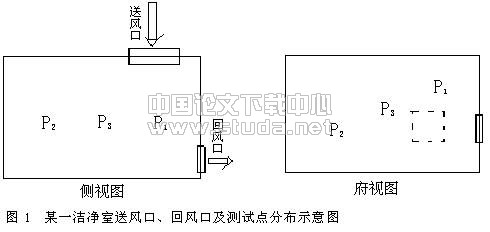山茶种子对乏营养状态下胰腺癌细胞耐受性消除作用的研究
3 讨论
肿瘤生长和增殖很大程度上依赖于血管新生来实现功能性的血流供应。然而,尽管大量的血管新生,肿瘤内的细胞仍处于氧气和营养匮乏的状态,部分是由于他们比正常的内皮细胞增殖还要快,部分是由于新形成的血管网络是紊乱的,因此不具备理想的功能[8,9]。然而,肿瘤细胞具有一种固有的生存能力,即便是在极端的条件下,特别是在低氧气和营养供应的条件下[10,12]。这对于高侵袭性肿瘤,如胰腺癌,这个相对少血供肿瘤,是个特别有说服力的解释[13]。而问题是胰腺癌细胞在极度乏氧和营养匮乏的条件下是如何生存和增殖的,这一定有一些机制帮助胰腺癌细胞在这样极端不利的环境中生存和增殖。
因此根据Awale等前期工作,假定对乏营养状态的耐受性是对少血流供应的生物反应的一部分,因而以乏营养状态下的癌细胞为对象,可能是抗癌药物研究的一个新手段[6,7,14]。
基于以上理论,我们采用乏营养状态下抗癌药物筛选的新方法,对山茶种子的不同提取物的抗胰腺癌活性进行了筛选。我们发现山茶种子醇提物在100 μg/ml的浓度下能有效消除PANC-1胰腺癌细胞对乏营养状态的耐受性,其存活率为0%,而在有营养状态下细胞仍然全部存活。因为正常组织不出现慢性缺血,所以在有营养状态下经样品处理后细胞仍然全部存活,说明其对正常组织没有细胞毒作用,而能选择性杀伤癌细胞。山茶种子醇提物醋酸乙酯层在50 μg/ml的浓度下,能优先在乏营养状态下有效消除胰腺癌细胞的耐受性,胰腺癌细胞的存活率仅为1.4%,在100 μg/ml的浓度下,在乏营养状态下显示了较强的细胞毒作用,但其在有营养状态下也显示了部分细胞毒作用。山茶种子醇提物过D101大孔树脂40% EtOH-H2O洗脱部分能有效消除PANC-1胰腺癌细胞对乏营养状态的耐受性而在有营养状态下细胞几乎全部存活。以上结果表明在50 μg/ml的浓度下,山茶种子醇提物醋酸乙酯层能优先在乏营养状态下杀死胰腺癌细胞,并且活性最强,提示其在胰腺癌的治疗上可能有一定的应用前景。
【参考文献】
[1]龚新雷, 秦叔逵. 胰腺癌的药物治疗进展[J]. 临床肿瘤学杂志, 2007, 12 (1): 68.
[2]Esumi H, Izuishi K, Kato K, et al. Hypoxia and nitric oxide treatment confer tolerance to glucose starvation in a 5’-AMP-activated protein kinase-dependent manner [J]. J Biol Chem, 2002, 277: 32791.
[3]Hockel M, Vaupel P. Biological consequences of tumor hypoxia [J]. Semin Oncol, 2001, 28: 36.
[4]Izuishi K, Kato K, Ogura T, et al. Remarkable tolerance of tumor cells to nutrient deprivation: possible new biochemical target for cancer therapy [J]. Cancer Res, 2000, 60: 6201.
[5]王永奇, 吴小娟, 李红冰, 等. 药用山茶属植物的研究[J]. 大连大学学报, 2006, 27 (4): 47.
[6]Awale S, Lu J, Kalauni SK, et al. Identification of arctigenin as an antitumor agent having the ability to eliminate the tolerance of cancer cells to nutrient starvation [J]. Cancer Res, 2006, 66 (3):1751.
[7] Awale S, Nakashima EM, Kalauni SK, et al. Angelmarin, a novel anti-cancer agent able to eliminate the tolerance of cancer cells to nutrient starvation [J]. Bioorg Med Chem Lett, 2006, 16 (3):581.
[8]Dang CV, Semenza GL. Oncogenic alteration of metabolism [J]. Trends Biochem Sci, 1999, 24:68.
[9]Southerland RM. Cell and environment interactions in tumor microregions: the multicell spheroid model [J]. Science, 1988, 240:178.
[10]Hahnfeldt P, Panigrahy D, Folkman J, et al. Tumor development under angiogenic signaling: a dynamical theory of tumor growth, treatment response, and postvascular dormancy [J]. Cancer Res, 1999, 59:4770.
[11]Vaupel P, Kallinowski F, Okunieff P. Blood flow, oxygen and nutrient supply, and metabolic microenvironment of human tumors: a review [J]. Cancer Res, 1989, 49:6449.
[12]Richard DE, Berra E, Pouyssegur J. Angiogenesis. How a tumor adapts to hypoxia [J]. Biochem Biophys Res Commun, 1999, 266:718.
[13]Rannibger K, Saldino RM. Arteriographic diagnosis of pancreas lesion [J]. Radiology, 1966, 86:470.
[14]Lu J, Kunimoto S, Yamazaki Y, et al. Kigamicin D, a novel anticancer agent based on a new anti-austerity strategy targeting cancer cells’tolerance to nutrient starvation [J]. Cancer Sci, 2004, 95:547.
